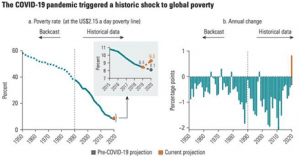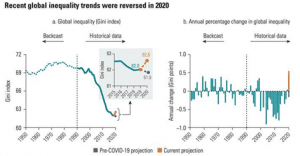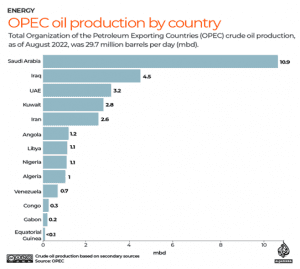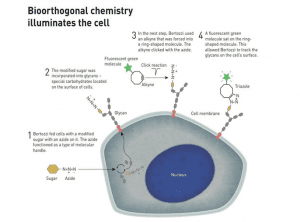INDIAN POLITY AND GOVERNANCE
1. THE CRITERION FOR SC STATUS
THE CONTEXT: The Supreme Court of India has sought the most recent position of the Union government on a batch of petitions challenging the Constitution (Scheduled Castes) Order of 1950, which allows only members of Hindu, Sikh and Buddhist religions to be recognised as SCs.
THE EXPLANATION:
Who all are included in the Constitution Order of 1950?
• When enacted, the Constitution (Scheduled Castes) Order of 1950, initially provided for recognising only Hindus as SCs, to address the social disability arising out of the practice of untouchability.
• The Order was amended in 1956 to include Dalits who had converted to Sikhism and once more in 1990 to include Dalits who had converted to Buddhism. Both amendments were aided by the reports of the Kaka Kalelkar Commission in 1955 and the High Powered Panel (HPP) on Minorities, Scheduled Castes and Scheduled Tribes in 1983 respectively.
• On the other hand, the Union government in 2019 rejected the possibility of including Dalit Christians as members of SCs, rooting the exclusion on an Imperial Order of 1936 of the then colonial government, which had first classified a list of the Depressed Classes and specifically excluded “Indian Christians” from it.
Why are Dalit Christians excluded?
• Ever since the amendment to include Sikhs as SCs in 1956, the Office of the Registrar General of India (RGI) has been reluctant in expanding the ambit of the Order beyond members of Hinduism or Sikhism. Responding to the Ministry of Home Affairs’s (MHA) 1978 request for an opinion on the inclusion of Dalit Buddhists and Christians, the RGI had cautioned the government that SC status is meant for communities suffering from social disabilities arising out of the practice of untouchability, which it noted was prevalent in Hindu and Sikh communities.
• It also noted that such a move would significantly swell the population of SCs across the country. However, the amendment to include Buddhist converts as SCs was passed in 1990, which at the time did not require the approval of the RGI — a mandate introduced in the rules for inclusion framed in 1999.
• In 2001, when the RGI again opined against including Dalit Christians and Muslims as SCs, it referred to its 1978 note and added that like Dalit Buddhists, Dalits who converted to Islam or Christianity belonged to different sets of caste groups and not just one, as a result of which they cannot be categorised as a “single ethnic group”, which is required by Clause (2) of Article 341 for inclusion.
• Moreover, the RGI opined that since the practice of “untouchability” was a feature of Hindu religion and its branches, allowing the inclusion of Dalit Muslims and Dalit Christians as SCs could result in being “misunderstood internationally” as India trying to “impose its caste system” upon Christians and Muslims.
• The 2001 note also stated that Christians and Muslims of Dalit origin had lost their caste identity by way of their conversion and that in their new religious community, the practice of untouchability is not prevalent.
Is there a case for inclusion?
• The petitions arguing for inclusion have cited several independent Commission reports that have documented the existence of caste and caste inequalities among Indian Christians and Indian Muslims, noting that even after conversion, members who were originally from SCs continued to experience the same social disabilities.
• This was substantiated in the First Backward Classes Commission’s report in 1953, the Report of the Committee on Untouchability Economic and Educational Development Of the Scheduled Castes in 1969, the HPP report on SCs, STs, and Minorities in 1983, the Mandal Commission Report, the report of the Prime Minister’s High-Level Committee formed in 2006, a 2008 study conducted by the National Commission for Minorities, the Ranganath Misra Commission Report and several other studies.
• In addition to this, the petitions have argued against the proposition that caste identity is lost upon conversion, noting that even in Sikhism and Buddhism, casteism is not present and yet they have been included as SCs. Furthermore, the above-mentioned reports argue that caste-based discrimination continues even after conversion, hence entitling these communities to SC status.
• However, the Union government refuses to accept the reports of the Commissions on the basis that these reports do not have enough empirical evidence to support their claims.
2. THE PARLIAMENT COMMITTEES, THEIR LEADERS, AND THEIR ROLE IN LAW-MAKING
THE CONTEXT: According to opposition party, a revamp of the Standing Committees of Parliament could potentially worsen the relations between the government and opposition parties.
THE EXPLANATION:
Of the 22 committees announced the Congress has the post of chairperson in only one, and the second largest opposition party, Trinamool Congress, none. The ruling NDA has the chairmanship of the important committees on Home, Finance, IT, Defence and External Affairs.
What are Committees of Parliament, and what do they do?
• Legislative business begins when a Bill is introduced in either House of Parliament. But the process of lawmaking is often complex, and Parliament has limited time for detailed discussions. Also, the political polarization and shrinking middle ground has been leading to increasingly rancorous and inconclusive debates in Parliament — as a result of which a great deal of legislative business ends up taking place in the Parliamentary Committees instead.
• A Parliamentary Committee is a panel of MPs that is appointed or elected by the House or nominated by the Speaker, and which works under the direction of the Speaker. It presents its report to the House or to the Speaker.
• Parliamentary Committees have their origins in the British Parliament. They draw their authority from Article 105, which deals with the privileges of MPs, and Article 118, which gives Parliament authority to make rules to regulate its procedure and conduct of business.
What are the various Committees of Parliament?
• Broadly, Parliamentary Committees can be classified into Financial Committees, Departmentally Related Standing Committees, Other Parliamentary Standing Committees, and Ad hoc Committees.
• The Financial Committees include the Estimates Committee, Public Accounts Committee, and the Committee on Public Undertakings. These committees were constituted in 1950.
• Seventeen Departmentally Related Standing Committees came into being in 1993, when Shivraj Patil was Speaker of Lok Sabha, to examine budgetary proposals and crucial government policies. The aim was to increase Parliamentary scrutiny, and to give members more time and a wider role in examining important legislation.
• The number of Committees was subsequently increased to 24. Each of these Committees has 31 members — 21 from Lok Sabha and 10 from Rajya Sabha.
• Ad hoc Committees are appointed for a specific purpose. They cease to exist after they have completed the task assigned to them, and have submitted a report to the House. The principal Ad hoc Committees are the Select and Joint Committees on Bills. Committees like the Railway Convention Committee, Committee on Food Management and Security in Parliament House Complex, etc. also come under the category of Ad hoc Committees.
• Parliament can also constitute a Joint Parliamentary Committee (JPC) with a special purpose, with members from both Houses, for detailed scrutiny of a subject or Bill. Also, either of the two Houses can set up a Select Committee with members from that House. JPCs and Select Committees are usually chaired by ruling party MPs, and are disbanded after they have submitted their report.
How important are the recommendations of the Committees?
• Reports of Departmentally Related Standing Committees are recommendatory in nature. They are not binding on the government, but they do carry significant weight. In the past, governments have accepted suggestions given by the Committees and incorporated them into the Bill after it has come back to the House for consideration and passage. These panels also examine policy issues in their respective Ministries and make suggestions to the government.
• The government has to report back on whether these recommendations have been accepted. Based on this, the Committees table Action Taken Reports, detailing the status of the government’s action on each recommendation.
• However, suggestions by the Select Committees and JPCs — which have a majority of MPs and heads from the ruling party — are accepted more frequently.
SOCIAL ISSUES
3. WORLD BANK SAYS 70 MILLION PLUNGED INTO POVERTY IN 2020: WHAT CAUSED SETBACKS IN INDIA, WORLD
THE CONTEXT: According to a new World Bank report, titled “Poverty and Shared Prosperity 2022: Correcting Course”, the Covid pandemic has been the biggest setback to global poverty alleviation in decades.
THE EXPLANATION:
According to the report, “The world is unlikely to meet the goal of ending extreme poverty by 2030 absent history-defying rates of economic growth over the remainder of this decade”.
What has the report found?
• The report states that global poverty reduction has been slowing down since 2015 but the Covid pandemic and the war in Ukraine have completely reversed the outcomes.
• By 2015, the global extreme-poverty rate had been cut by more than half. Since then, poverty reduction has slowed in tandem with subdued global economic growth. The economic upheavals brought on by COVID-19 and later the war in Ukraine produced an outright reversal in progress.”

• As such, the global goal of ending extreme poverty by 2030 would not be achieved.
• In 2020 alone, the number of people living below the extreme poverty line rose by over 70 million; the largest one-year increase since global poverty monitoring began in 1990. As a result, an estimated 719 million people subsisted on less than $2.15 a day by the end of 2020.
• Inequalities, too, have risen the poorest people bore the steepest costs of the pandemic: income losses averaged 4 per cent for the poorest 40 per cent, double the losses of the wealthiest 20 per cent of the income distribution. Global inequality rose, as a result, for the first time in decades.
• Global median income declined by 4 per cent in 2020—the first decline since measurements of median income began in 1990.

What about India’s poverty levels?
Poverty has gone up in India too.
• “Previous estimates suggested a poverty headcount rate at the US$1.90 poverty line of 10.4 percent in 2017…The latest estimate based on Sinha Roy and van der Weide (2022) shows that poverty at the US$1.90 poverty line was 13.6 percent in 2017,” finds the report.
• However, the report uses data from Centre for Monitoring Indian Economy (CMIE), because there are no official estimates of poverty available since 2011.
• “The most recent survey data released by the National Sample Survey Office of India used to measure poverty is the 2011/12 National Sample Survey (NSS). The government decided not to release the 2017/18 NSS round because of concerns about data quality,” it states.
• But it could not have left India out of the poverty estimates simply because India is one of the countries with the biggest poor population. “Because of India’s size, the lack of recent survey data for the country significantly affects the measurement of global poverty, as was evident in Poverty and Shared Prosperity 2020.”
• It states that given the country’s size and importance for global and regional poverty estimates, the CMIE data helps fill an important gap.
What are the suggested solutions?
• According to President of World Bank Group, “fiscal policy—prudently used and considering the initial country conditions in terms of fiscal space—does offer opportunities for policy makers in developing economies to step up the fight against poverty and inequality”.
• To be sure, the average poverty rate in developing economies would have been 2.4 percentage points higher without a fiscal response. Yet government spending proved far more beneficial to poverty reduction in the wealthiest countries, which generally managed to fully offset Covid-19’s impact on poverty through fiscal policy and other emergency support measures.
• Developing economies had fewer resources and therefore spent less and achieved less: upper-middle-income economies offset just 50 per cent of the poverty impact, and low- and lower-middle income economies offset barely a quarter of the impact.
The World Bank has three specific suggestions when it comes to fiscal policy.
1: Choose targeted cash transfers instead of broad subsidies.
2: Prioritize public spending for long-term growth.
3: Mobilize tax revenues without hurting the poor.
INTERNATIONAL RELATIONS
4. WHAT IS OPEC+ AND WHY HAVE THEY SLASHED OIL PRODUCTION?
THE CONTEXT: The grouping of the world’s largest oil-producing countries, the Organisation of the Petroleum Exporting Countries (OPEC) and its allies, together known as OPEC+, decided to cut oil production by 2 million barrels per day (bpd).
THE EXPLANATION:
• According to sources, this is the largest cut since the beginning of the Covid-19 pandemic. Brent crude, the international benchmark, was up 28 cents or 0.3%, at $92.08 a barrel after the cut was announced.
• In light of recent falling gas prices, OPEC+ officials had decided in September to reduce oil output by a modest 100,000 bpd after they first agreed in the previous month to increase production by the same amount.
What is OPEC+?
• Established in 1960 by founding members Iran, Iraq, Kuwait, Saudi Arabia and Venezuela, OPEC has since expanded and now has 13 member states. With the addition of another 11 allied major oil-producing countries that include Russia, the grouping is known as OPEC+.
• The objective of the organisation is to “coordinate and unify the petroleum policies of its Member Countries and ensure the stabilisation of oil markets in order to secure an efficient, economic and regular supply of petroleum to consumers, a steady income to producers and a fair return on capital for those investing in the petroleum industry”.
• Previously controlled by western-dominated multinational oil companies known as the “Seven Sisters,” OPEC sought to give the oil-producing nations greater influence over the global petroleum market. They account for roughly 40 per cent of the world’s crude oil and 80 per cent of the globe’s oil reserves, according to estimates from 2018. They usually meet every month to determine how much oil the member states will produce.
• However, many allege that OPEC behaves like a cartel, determining the supply of oil and influencing its price in the world market.

Why are they slashing production?
• Oil prices skyrocketed after Russia’s invasion of Ukraine in February, and have since begun to soften over the past few months, before dropping sharply to under $90 in September due to fears of a recession in Europe and reduced demands from China because of its lockdown measures.
• Today’s cut is the biggest of its kind since 2020 when OPEC+ members slashed outputs by 10 million bpd during the Covid-19 pandemic, Reuters reported. The reductions would boost prices and be extremely beneficial for the Middle Eastern member states, to whom Europe has turned for oil after levelling sanctions against Russia since it invaded Ukraine.
• OPEC+ members are concerned that a faltering global economy would reduce the demand for oil, and the cuts are seen as a way to protect profits. Increased oil prices, which first occurred during the invasion of Ukraine, have helped Saudi Arabia, one of the founding members of OPEC, become one of the world’s fastest-growing economies.
HEALTH ISSUES
5. NEW RESEARCH: SCIENTISTS ENGINEER MOSQUITOES THAT CAN’T SPREAD MALARIA, OFFER HOPE OF ERADICATING DISEASE
THE CONTEXT: Scientists have genetically modified mosquitoes to slow the growth of malaria-causing parasites in their guts — an advancement that can help prevent transmission of the disease to humans.
THE EXPLANATION:
• The disease is transmitted between people through a female mosquito after it bites someone infected with the malaria parasite. The parasite develops into its next stage in the mosquito’s gut and travels to its salivary glands, ready to infect the next person it bites.
• Now, the mosquitoes have been engineered to produce compounds that slow the growth of malaria-causing parasites.
• Though only around 10 per cent of mosquitoes live long enough for the infectious parasite to develop, malaria remains one of the most devastating diseases globally, putting at risk about half of the world’s population. In 2021, it infected 241 million people and killed 627,000 people.
The research
• Researchers from the Institute for Disease Modelling at the Bill and Melinda Gates Foundation developed a model to assess the impact of such modifications and found it could be effective even where transmission is high. While the technique, described in a paper published in Science Advances journal on September 21, has been shown to dramatically reduce the possibility of malaria spreading in a lab setting, if proven in the real world it could offer a powerful new tool to help eliminate malaria.
• Researchers from the Transmission: Zero team at Imperial College London, UK, genetically modified the main malaria-carrying species of mosquito in sub-Saharan Africa, Anopheles gambiae, such that the mosquito produced antimicrobial peptides in its gut when it had a blood meal.
How it works
• The peptides impair the malarial parasite’s development and also cause the mosquitoes to have a shorter life span. The co-first author of the study, Tibebu Habtewold, said new tools are increasingly needed as mosquitoes develop resistance to insecticides and treatments.
• To prevent malaria spread via genetic modification, the change needs to be spread from lab-bred mosquitoes to wild ones. The innovation is so designed that it can be coupled with existing ‘gene drive’ technology.
• “Gene drive is one such powerful weapon that in combination with drugs, vaccines and mosquito control can help stop the spread of malaria and save human lives,” study co-lead author Professor George Christophides said. Gene drive would cause the anti-parasite genetic modification to be preferentially inherited, making it spread more widely among any natural populations.
Applicability
• It would, however, require extremely careful planning to minimise risks before any field trials. The Transmission:Zero team is, therefore, creating two separate but compatible strains of modified mosquitoes — one with the anti-parasite modification and one with the gene drive.
• They can then test the anti-parasite modification on its own first, adding in the gene drive once it has been shown to be effective. With partners in Tanzania, the team set up a facility to conduct some first tests. They are also risk-assessing potential releases of modified mosquitoes and taking into account potential hazards, but are hopeful that their intervention can help eradicate malaria.
SCIENCE AND TECHNOLOGY
6. THE NOBEL PRIZE 2022: MAKING CHEMISTRY CLICK
THE CONTEXT: The 2022 Nobel Prize in Chemistry has been awarded to chemists Carolyn R. Bertozzi and K. Barry Sharpless from the U.S., and Morten Meldal from Denmark, for their work in the field of click chemistry and bioorthogonal chemistry.
THE EXPLANATION:
• Dr. Sharpless was the first scientist to work on what is today called click chemistry – a branch of science that explores the assembly of molecules. In fact, this is not his first Nobel Prize in Chemistry. He previously won the award in 2001.
What is click chemistry?
• In simple terms, click chemistry is a functional field where molecules snap together quickly and efficiently – literally like a click.
• Dr. Sharpless talked about the field in the research paper in 2001, where he defined it as a “set of powerful, highly reliable, and selective reactions for the rapid synthesis of useful new compounds and combinatorial libraries through heteroatom links”. In the same paper, he talked about the need to develop synthetic strategies instead of trying to imitate naturally occurring compounds. He is of the view that even if click chemistry is unable to provide exact replicas of natural molecules, it can help find molecules that fulfil the same purpose.
• According to Dr. Sharpless, a reaction should be able to occur in the presence of oxygen and in water for it to be called that of click chemistry.
The need for click chemistry
• Replicating reactions that involve bonds between carbon atoms – that are vital to the existence of life – is expensive and often leads to side reactions and loss of material. Instead of trying to make carbon atoms react with each other, Dr. Sharpless’s research focuses on using smaller molecules that already have a complete carbon frame, The Nobel Foundation noted. These molecules can further be linked using oxygen or nitrogen atoms as bridges. Simpler reactions, “where there is a strong intrinsic drive for the molecules to bond together”, may avoid the loss of material as well as the unwanted side reactions.


